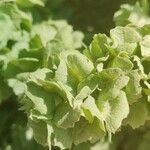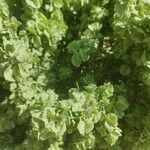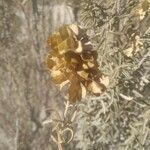A shrub. It grows 1.5 m high and spreads 1.5 m wide. There is a dense mass of stems. The leaves are narrow and have blunt tips. They have a mealy white appearance. The flowers are small and yellow. The fruit are papery and have 4 wings. They are crowded into short spikes.




